Sheryl and I love craft beer. We enjoy traveling the world visiting breweries, attending beer festivals and sharing bottles and cans with our beer friends. When we lived in Northern California, wine reigned supreme. It is considered Wine Country, after all! We like wine, too, but nothing compares to the look, smell and flavor of a craft beer. While Sheryl prefers darker beers like porters and stouts, I like hoppy beers. There isn’t an IPA I’ve tried yet I didn’t finish. But what about lager? Specifically grain-forward lagers. You can learn more about grain-forward lagers below:
Hanabi is a lager brewing project, born from a winemaking life and a passion for building things with our hands. We are forging a path to further develop what we are calling ‘Grain-Forward’ Lager. The flavors that our beers focus on are distinct from those of ‘hop-forward’ beers (flavors of hop flowers dominant), or what are considered ‘malt-forward’ beers (often flavors derived from the malting process itself are dominant rather than flavors originating from the grains themselves).
In the craft of brewing, there has been a heated 180-year straight run of massive innovation and technical developments in the field, with marked improvements in the brewing and malting (barley sprouting) processes, methodologies, and equipment that allow us to brew cleaner tasting, more precise, nuanced, intricate beers than ever before. And certainly this period of honing our methods is far from over. However, now with a well-established toolkit, we believe that the natural shift in focus goes from process to our fundamental agricultural ingredients, a shift that happened with wine some time ago.
For showcasing the flavors of hops, with attention to their variety, their agronomy, and how best to brew with them to show off their excellent flavors, this work is already well developed and under-way. However, for showcasing the flavors that the grains themselves can bring to beer, the ingredient that is considered the soul of beer, and which is in fact the main ingredient in beer besides water, this work is still highly under developed.
Here at Hanabi Lager, we are using lager brewing as a methodology to explore the delicious range of flavors that grains can bring to beer. We design our processes to allow the flavors of the grains to shine, and the results are beers that are simultaneously aromatic, pleasing, and sophisticated, distinguished by their elegance and complexity. If this intrigues you, please join us on our journey to discover what delicious flavors can be found in the heritage, heirloom, and special modern varieties of barley that we work with and beyond.
Before we relocated to Southern California, we got the chance to visit with the Screaming Eagle winemaker and vineyard manager. He also has a side project called Hanabi Lager. We got the chance to spend time with him in his brewery, talked about his process, and left with some bottles. The labels are awesome. More on that below. The beer is amazing, too. You can truly taste the love he has for brewing beer and the more I learned about this man, the more impressed I was. We met again at Russian River Brewing Company and stay in touch via email and text message. I am so impressed with this man I asked him if he’d do an interview for my blog. You are really going to enjoy this. You might learn something, too. Oh, and don’t forget to check out the photo gallery at the end. Amazing.
This interview is a long time coming. But it is an honor to introduce Nick Gislason. Kanpai!
Reimagining the Art of Lager Brewing
Start by giving me an overview of Hanabi Lager. Where are you based and how long have you been brewing beer?
Our brewery is in Napa, within a large warehouse building that houses a bunch of very talented folks making delicious wines and ciders on either side of us. My wife Jenn and I have been brewing together since we met 20 years ago, although the latest incarnation of our brewing endeavors, Hanabi Lager Co., released its first lager beer in Autumn 2020.
I’m guessing you only brew lagers?
Indeed, we feel it’s the best platform for showing off the delicious grains that we are sourcing. Lager gives a very clear and honest lens into the grains’ flavors. Not to mention, we find them very delicious and highly drinkable.
How does the brewing process differ from brewing a lager versus an ale?
Both ale and lager start with a ‘tea’ that is brewed from barley, and is spiced with hop flowers. Then, yeasts go to work transforming that tea into ale or lager in the brewery fermentation tanks. If the yeasts perform the fermentation under warmer condition (close to room temperature), the beer becomes an ale and tends to be more fruity, sometimes flowery. If the yeasts are cold-lovers, and ferment the barley tea under really cold conditions, then you end up with lager beer; a beer that is crisp and super refreshing.
Is a lager harder to brew?
Lagers are definitely known amongst brewers to be the most unforgiving of all beer styles to make. With style of lager like Pilsner and Helles that are lighter and more delicate in flavor than most ales, you are basically showcasing two main things: the grain’s quality and characteristics, and brewer technique. There are no strong flavors of hops or a fruity ale fermentation to cover anything up. So, everyone can see clear as day the nature of your ingredients and your technique.
Where does the name come from?
Hanabi is the Japanese word for fireworks. It literally means: fire-flower (Hana-bi). I’ve been a student, and then professional commercial practitioner of Japanese style fireworks manufacture and display since I was a young lad. An apprentice at age 12, then becoming the Technical Director for Lopez Island Community Fireworks when I was 21. I still manage the fireworks design for that same organization today.
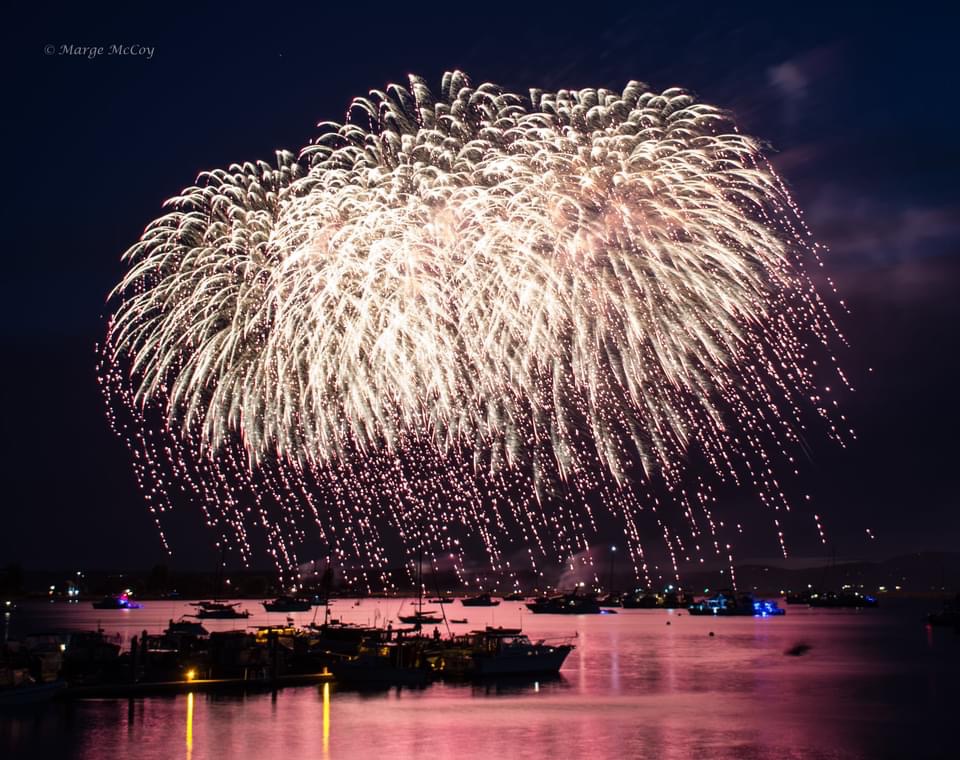
Let’s pretend I don’t know what lager is… Give me a 10,000 foot view of this beer style and why it means so much to you.
First, I love brewing in general because it is such a simple, natural process. Not unlike how wine is made, there are tons of parallels. It’s just using grains instead of grapes. In any case, first we steep a tea, cold or hot, using grapes or grains (for winemaking and brewing respectively). Then, we allow natural or cultivated yeasts to ferment these teas that we’ve so carefully prepared into wine or beer respectively. Lager beer is defined as a barley (or other grains) tea that’s been fermented very cold, that’s it. This brings a certain clarity, precision, crispness, purity to the beer. We love cold lager brewing because when you use very high quality, delicious grains to begin with, you can brew a beer that’s simultaneously complex and flavorful, but refreshing and crisp at the same time.
How long does it take you to brew a batch?
Brewing the barley tea takes about 12-14 hours to do a single batch, the way we do it. Filling the fermentation tanks takes multiple batches brewed one after the other, in an extended multi-day work party that nearly goes around the clock sometimes. Once the fermentation tanks are full, then the yeast’s job begins, and they take about three-four months to transform our barley teas into the lager beer that we’re after. In that period of time we are shepherding the process along, it’s a lot of smelling, tasting, looking, deciding how to manage the process to produce a lager beer that’s the most pleasurable it can be.
Have you ever made a mistake while brewing a beer? If so, what do you do with it?
Ha, of course! In the early days (homebrewing), you fed it to your roommates who weren’t particularly discriminating about the flavors but who were pleased for free booze 
Sheryl and I had the chance to visit the brewery. Thank you for being such gracious hosts. Tell me more about your brewery. It’s a unique location!
Thanks for making the trek over, it was great to meet you both! Our brewery is located in what is lovingly called the Napa wine ghetto; the warehouse district south of town where many winemakers with day jobs up in the Valley come down at night to make wine for their own family businesses. It’s a super vibrant little production area down there, a lot of scrappy, brilliantly talented people making the wines they dream about. It’s pretty grass-roots, which is a fun energy to be surrounded by. For instance, some of our best friends Dan and Jackie Person are making their CARBONISTE | Modern Sparkling Wines in the warehouse bay next to us, and there are many others as well there. We built our brewery inside a vacant bay, within the custom crush winery facility at large that is owned and managed by RD Winery. Such a cool group down there, the energy is super down to earth, and earnest in everyone’s love of the craft.
Any plans to open a tasting room?
Honestly, I think probably not! We see a public tasting room and brewing beer as requiring two totally different (but complementary) businesses and skill sets in a way. At the moment, we are pouring every ounce of energy into brewing the most delicious lagers that we possibly can, and we honestly don’t have the bandwidth to think about what making a great tasting room experience for us would look like. It’s a matter of focusing on what we do best I think, at least for now when it’s still such a small company.
You are also a winemaker. Tell me more about your work at Screaming Eagle.
I’ve been the Screaming Eagle winemaker and vineyard manager for 12 years now. I’ve been focused in that time on honing our naturalist farming approach into a ‘way beyond organic’ philosophy, that is allowing us to grow wines with purity, vibrancy, and complexity. It’s a very flavor-based approach there. Although I’m trained as technically as they come, I still rely heavily on my senses; nose, eyes, taste, because these are still the most acute instruments that I think we have for making great wines (and lager beers!). It’s a subtle process with a million little (but important) shepherding decisions along the way.
You’ve released several batches over the years. How do you decide what to release?
For Hanabi, we brew one special lager beer for each season, and that’s it. We are constantly searching for delicious and interesting varieties of barley, many of them older heirlooms, that we can showcase through the lens of lager. These heirloom (heritage) varieties of barley in particular are only recently experiencing a small but significant resurgence, so it’s an exciting time. We are basically on the cutting edge of that, working with farmers and maltsters to bring up varieties that might yield less per acre true, and be more costly to work with, but which have incredible flavor and complexity. Then, we pair the flavors of these special grains with the season that we feel will be most appropriate for them. For instance, stronger flavored grains for Autumn and Winter, and typically lighter, fresher grains for Spring and Summer.
How has the beer changed from one batch to the next?
Every batch (seasonal release) is intentionally different one to the next, usually made distinct by the particular grain that we are wanting to showcase, that’s always indicated on the label. We are constantly adapting our brewing techniques, like in winemaking, to adapt to the grains that we have in front of us. We brew pilot batches with each new grain to assess its innate personality, and use brewing techniques to shape a lager beer into what we feel is a delicious, pleasurable expression of that grain’s personality.
Who are some of your biggest inspirations? There are so many great brewers out there!
As I became acquainted with brewing and beer as a young lad, I greatly admired the works of Ken Grossman (Sierra Nevada Brewing Co.), John Maier (Rogue Ales & Spirits), the Widmer brothers, Irene Firmat and Jamie Emmerson (Full Sail Brewing), Karl Ockert (BridgePort Brewing Company), Gary Fish (Deschutes Brewery), Barbara Groom (Lost Coast Brewery). I have always greatly respected these pioneers and their classic beers. Since then, Georgetown Brewing Company and Mac & Jack’s Brewing Company certainly became favorites as well, as a Washingtonian. These days, I also dig the Chuckanut Brewery and Kitchen, Bierstadt Lagerhaus, Prost Brewing, Wayfinder Beer, Russian River Brewing Company, Highland Park Beer, Jack’s Abby, and Coedo Brewery beers a lot. All of these beers for me are exceptionally drinkable and delicious.
When you’re not drinking a lager, what is in your glass?
White Burgundy, Meursault specifically. Or, Northern/Southern Rhône.
Tell me more about your mailing list. What sort of content are you sending out and how often are you emailing folks?
We are sending out the background story for each beer that we release. That’s one beer per season, so essentially every three months we send out note to everyone to explain what we’ve been up to, and what special grains and beer we’ve put together for the coming season.
If you could only drink one beer for the rest of your life, what beer are you choosing?
Whatever Will Kemper is brewing.
Who designs all these labels? I love the connection to fireworks.
A friend who also does a lot of labels for some of our favorite wines; Michael Kirts & Heroist. The art comes directly from old Japanese fireworks catalogs from the 1800s that I came to know and love as an apprentice pyrotechnician, when I was 12 years old. Those images have been stuck in my mind ever since.
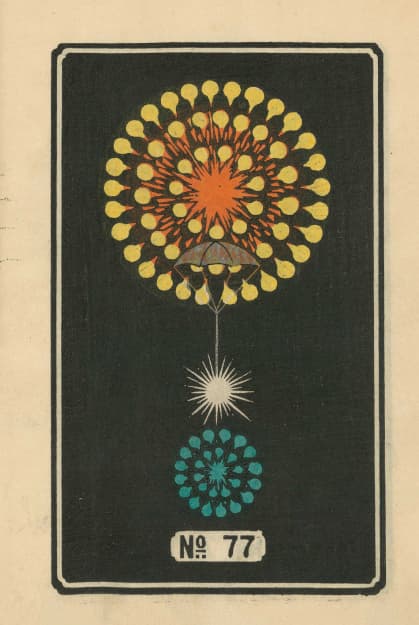
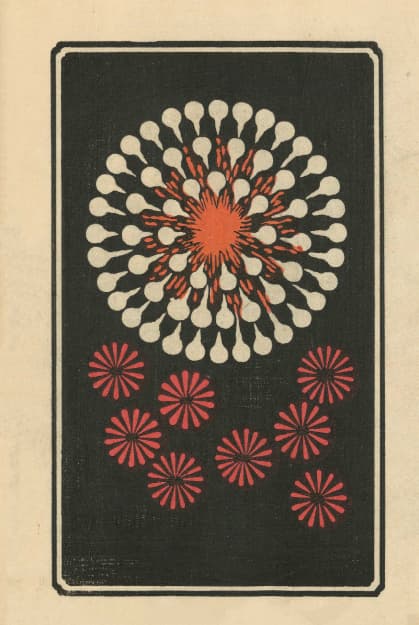
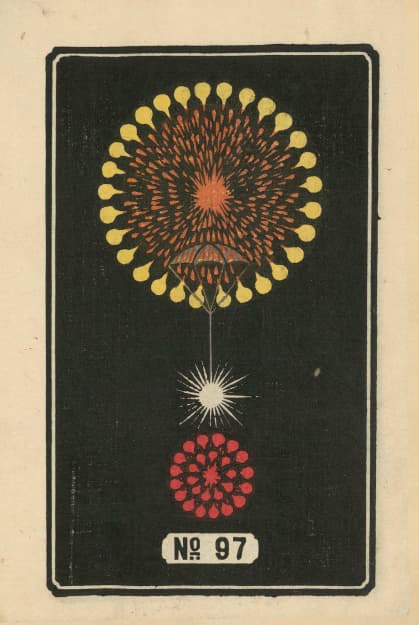
Speaking of fireworks, tell me more about your passion for those.
Ah yes… Am working on the 500 page autobiography about that… Just kidding. But, we could talk a long time about fireworks. The main bits of timeline: I was born obsessed. A fellow named Dwight Walters took me, as a 12 year old, under his wing as an apprentice in Japanese style fireworks many moons ago. I took over as the technical director for the organization that he founded when I was of ‘appropriate’ age. The was 17 years ago. Just recently I visited Nagaoka in Japan, which unbeknownst to me, was the hometown of one of Dwight’s early mentors in fireworks, a great craftsman named Kase-sama, who was building literally some of the world’s best fireworks for many decades before I was even born. It was an almost religious experience to find myself standing in his town, watching the Hanabi (fireworks) there, and realizing that the seeds of my lifelong experiences in fireworks had originally come from there. Honestly, fireworks has been a huge part of my life: it prompted me to learn chemistry, welding, machining, metal work, geometry before I was even in high school. After, it led me to brew beer, and then, to make wine… There is a common thread of craftsmanship and artistry among all of these things actually.
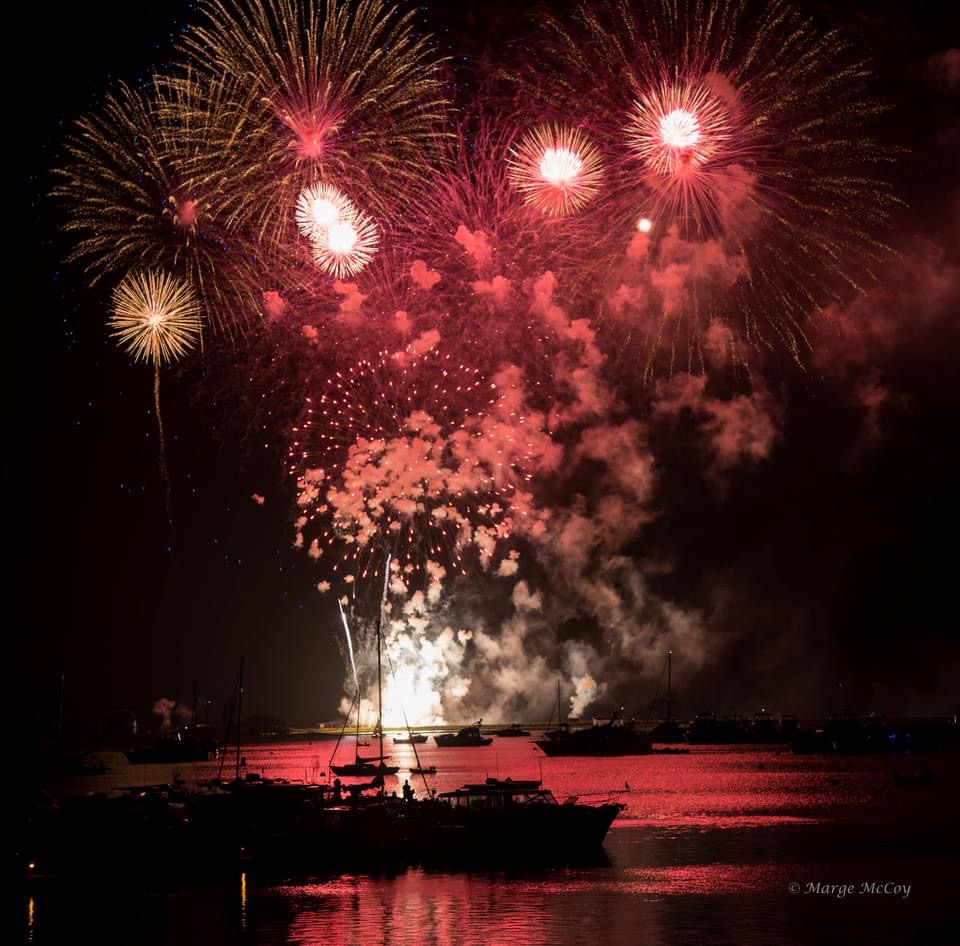
Are you active on Untappd?
No, actually. I’m still more of a paper and pencil guy, I’m always taking notes, constantly writing and sketching in my little books. That said, I think it’s totally awesome how democratic media has become, and I love the idea of Untappd in that respect. As a means of connecting fellow beer enthusiasts from around the world and as a means of sharing stories. It’s super cool, bringing people together around something that we all love!
Where can folks at home buy Hanabi Lager?
Within California we sell directly via our Mailing List. To sign up, just send us an email at info@hanabilager.com and we’ll generally respond within a day or so. Elsewhere, we have a number of outstanding retail partners whom we work with who are able to ship out of the state.
What else can you tell me about Hanabi Lager Co.?
It was a very intentional decision for us to put lager in our name, to commit to brewing and promoting quality lager, which still feels like an underappreciated and misunderstood style of beer.
What’s next?
Slowly weaving a more intricate tapestry, thread by thread. Continuing to expand on our relationships with our grain growers and suppliers to bring ever more delicious grains into the mash kettle. To continue being inspired by out-of-the box collaborations. It’s part of the fabric of the Hanabi Lager family and philosophy to bring people together to make something special that might not otherwise have ended up together. We are generalists in a way, putting a diverse set of backgrounds and skills together to make Hanabi Lager happen.
Thank you for doing this. Always enjoy getting to know folks that brew my drink of choice. In all of the interviews I do, I always give the artist the last word. Go.
Let the Sparks Fly!
Connect with Hanabi Lager:
Website: https://hanabilager.com/
Mailing List: https://hanabilager.com/pages/mailing-list/
Facebook: https://www.facebook.com/hanabilager/

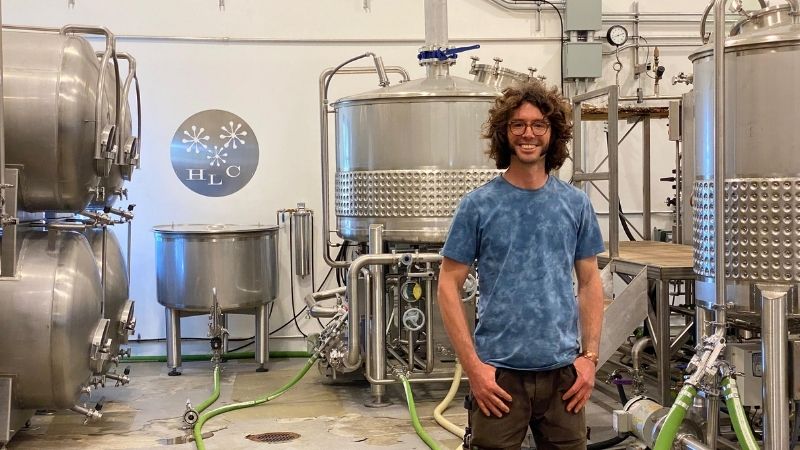
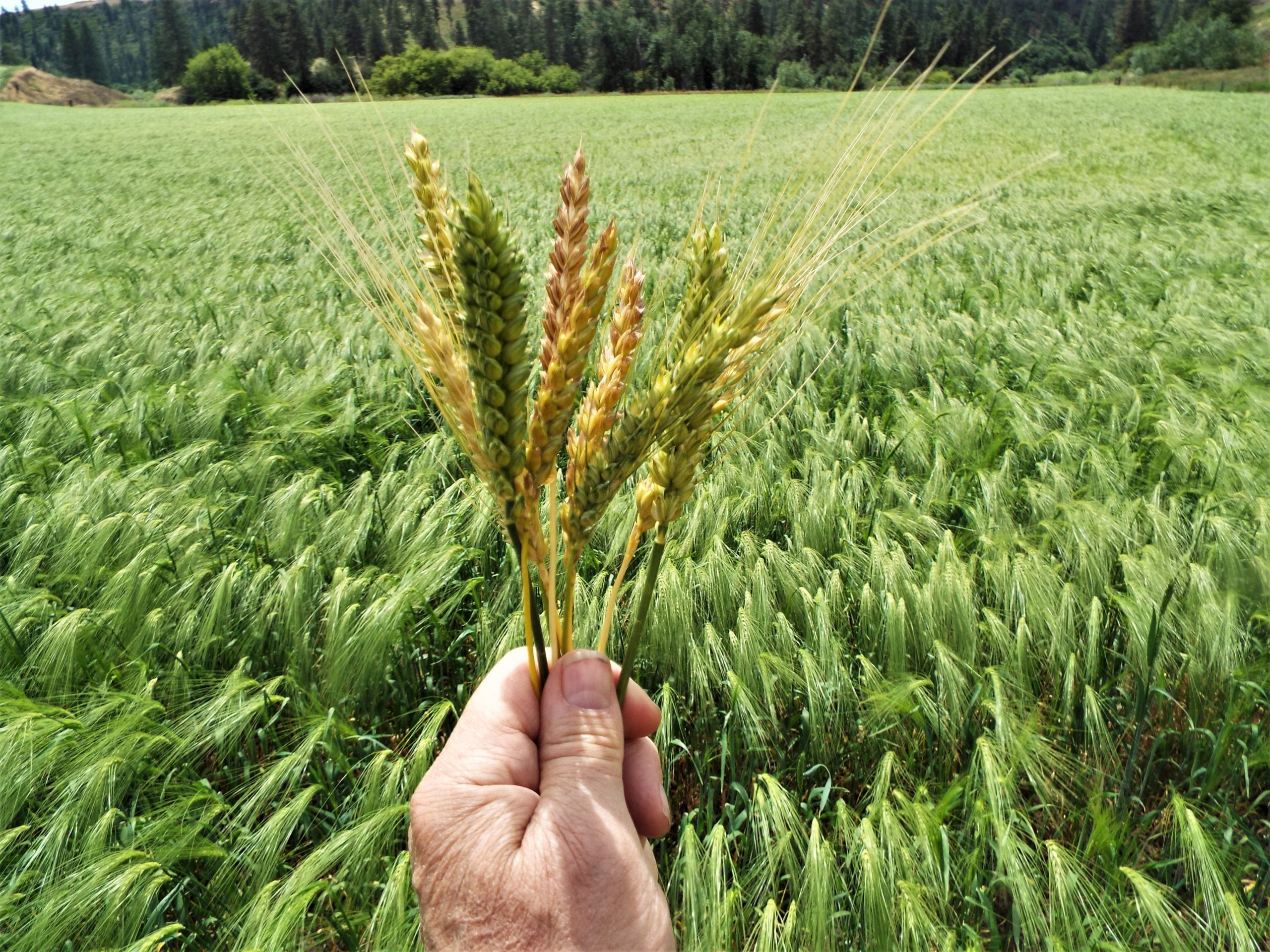

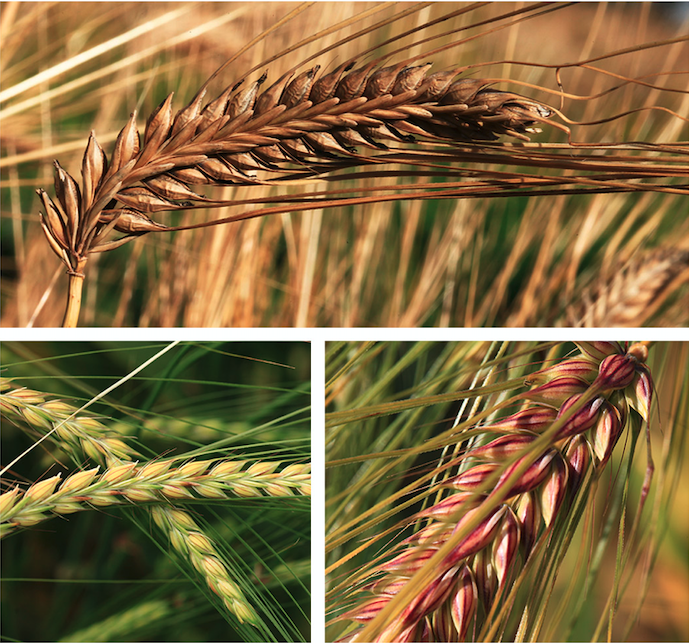



The maker of some of California’s most coveted wines discusses what drove him back to beer, and to a particular focus on lager as a way.